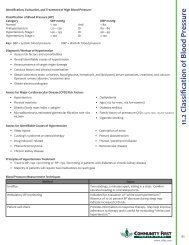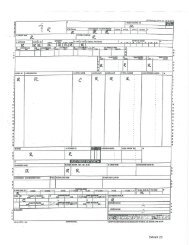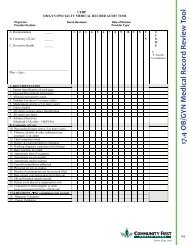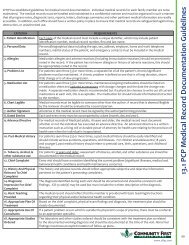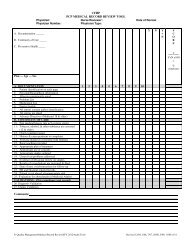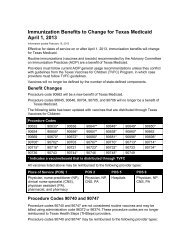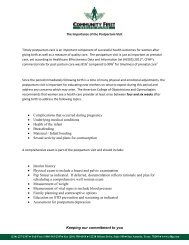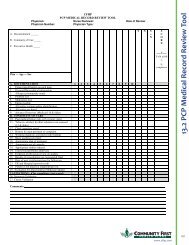9.16 Orders for Adults with DKA and Hyperglycemic Hyperosmolar ...
9.16 Orders for Adults with DKA and Hyperglycemic Hyperosmolar ...
9.16 Orders for Adults with DKA and Hyperglycemic Hyperosmolar ...
Create successful ePaper yourself
Turn your PDF publications into a flip-book with our unique Google optimized e-Paper software.
<strong>Orders</strong> <strong>for</strong> <strong>Adults</strong> <strong>with</strong> <strong>DKA</strong> <strong>and</strong> <strong>Hyperglycemic</strong> <strong>Hyperosmolar</strong> State (HHS)These orders may be initiated in the Emergency DepartmentPotassiumreplacementPhosphorusreplacementSodiumbicarbonate(<strong>DKA</strong>)Alert parameters<strong>for</strong> notifyingphysicianCall physician if K is 6 mEq/L (Note: Urine output should be >30 mL/hour be<strong>for</strong>e starting K + replacement)Add KCl to IV fluids:♦ If K is 5.2 mEq/L, hold KCl♦ Consider KPO 4 instead of KCl if serum PO 4 is low Other:Consider if evidence of alcohol abuse, malnutrition, etc. Give 10 mEq/L KPO 4 in one liter of IV fluid x 1 Other:___________________________________________________________________ Give sodium bicarbonateIf pH 1 hour <strong>with</strong> no other source of insulin♦ TPN stopped, interrupted or any change in <strong>for</strong>mulation♦ Deterioration in mental status♦ Patient does not respond to above orders <strong>for</strong> glycemic control Other_________________________________________________________________Transition toSQ insulinOther orders Other _________________________________________________________________ Proceed to Texas Diabetes Council Transition Algorithm From I.V. to S.Q. Insulin Other:1. ________________________________________________________________________________2. ________________________________________________________________________________3.________________________________________________________________________________4. ________________________________________________________________________________References:1. American Diabetes Association. St<strong>and</strong>ards of medical care in diabetes-2008. Diabetes Care. 2008;31(Suppl 1):S12-S54.2. Kitabchi AE, Umpierrez GE, Murphy MB, et al. <strong>Hyperglycemic</strong> crises in adult patients <strong>with</strong> diabetes. A consensusstatement from the American Diabetes Association. Diabetes Care. 2006;29(12):2739-2748.3. American Diabetes Association. <strong>Hyperglycemic</strong> crises in patients <strong>with</strong> diabetes mellitus (Position Statement).Diabetes Care. 2004;27 (Suppl 1):S94-S102.4. Clement S, Braithwaite S, Magee M, et al. Management of diabetes <strong>and</strong> hyperglycemia in hospitals(technical review). Diabetes Care. 2004;27:533-591.5. Lee P, Greenfield JR, Campbell LV. “Mind the gap” when managing ketoacidosis in type 1 diabetes. Diabetes Care.2008;31(7):e58.Physician Signature__________________________________________Date_________________Time___Approved: July 31, 20083 of 382 H EALTH PLANSwww.cfhp.com



